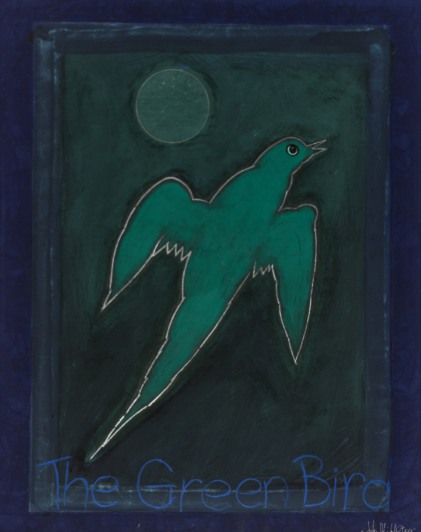Co-opera Co presents Hansel and Gretel at John McIntosh Arts Centre
I thought I wasn’t familiar with this opera before last night: as a child studying music. Humperdinck was not one of the composers I learnt about, and I’m afraid I encountered the music of the 1960s Englebert before I realised he was named after an eminent musical predecessor. However, upon hearing that I was attending Hansel and Gretel that evening, a colleague advised me that I would recognise lots of songs from my childhood. He was right, the aria which provides the title of this piece being but one of them (I have been singing it all day). This, of course, added a lovely sense of recognition to my enjoyment of the evening.
The action was initially set in 1950s Britain, but later seemed to move forward in time; with the witch using an overhead projector and a camera vintage 70s or 80s, and marking the contents of her fridge “Best Before 2013.” The set was broadly based around the mother’s washing business, and some of the garments from the washing line were used as Chinese lanterns at the end of the story to great effect.
Musically, this was of a high standard, starting with the orchestra (conducted by Stephen Higgins), whose overture set the tone for the night, being both beautiful and haunting. There was no chorus, so the production was the work of only five singers (mother doubling with witch). All five gave excellent vocal performances, with Rahel Moore’s Sandman being particularly evocative.
The show was very well choreographed, and the cast’s movement skills were wonderful, especially Carris Jones’ drag queen witch, and Gretel’s jerky puppet steps. Lone man Stephen John Svanholm played the exuberant, drunken father very well, and Susanne Holmes portrayed Hansel with all the exuberance of boyhood. With such a tight cast and consistent performance, it is difficult to pick out a favourite, but personally I was particularly impressed by Llio Evans (Gretel).
When an adult woman plays a small child, there is a very real danger of her ending up looking like Baby Jane. The audience had nothing to worry about on that score, however, as Llio’s physicality perfectly captured that of a little girl. The way she stood, walked, moved her arms, and her facial expressions were all ideally calculated to convey Gretel’s emotions (her terror in the forest at night is a good example). Her singing was consistently skilful and accomplised: I especially enjoyed her opening aria of Act II.
All in all, Co-opera Co have done a marvellous job with Hansel and Gretel, and much credit is due to director James Bonas, working with the company for the first time. As he said when I interviewed him prior to the performance, (Hansel and Gretel is) “an absurdly brilliant opera. It’s full of music so delicious you want to eat it and it’s joyfully short but densely written so that it’s packed with action.” The same can be said for this production.
Hansel and Gretel, along with Don Giovanni and The Magic Flute will now go on a nationwide tour. For more information, please visit www.co-opera-co.org.
Mary Tynan



